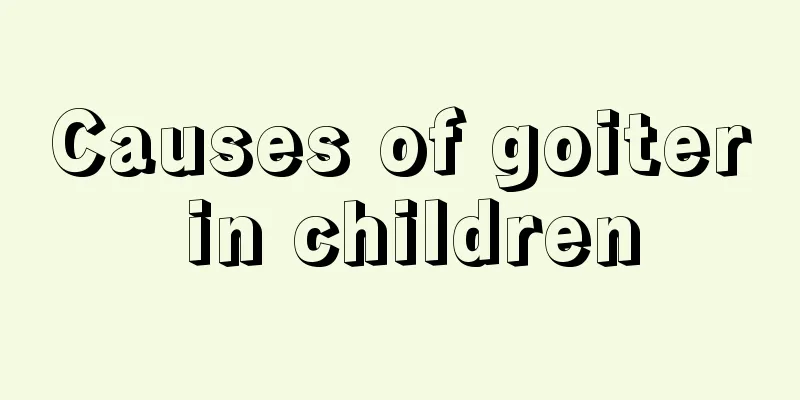Why does my baby have pain around his belly button?

|
Pain around the baby's belly button is a common disease in pediatrics. In life, there are always some babies who have pain around the belly button, which makes some parents very worried, but they don’t know what causes the pain around the baby’s belly button. For this reason, many parents want to find out the cause of the pain around the baby’s belly button as soon as possible and treat it in time. So, why does the baby have pain around the belly button? Experts say that because there are many reasons for the pain around the baby’s belly button, parents should pay attention to observe the child’s symptoms when sending their children to the doctor, and never use painkillers for the child at will, otherwise it will cover up the symptoms of the onset of the disease and affect the doctor’s observation of the condition, resulting in delayed diagnosis and treatment. If a child has the following common abdominal pain symptoms, parents should take appropriate measures in a timely manner and send the child to the hospital as soon as possible. 1. Ascariasis Characteristics of abdominal pain: Sudden abdominal pain occurs when the environment changes or the child has a fever, diarrhea, hunger, or eats spicy food. The child cries, rolls on the ground, bends over, sweats, and has a pale face. The abdominal pain is most severe around the navel. It is often accompanied by vomiting, and even roundworms may be vomited out. Sometimes abdominal pain can be relieved or even disappear on its own, and the child will appear tired. After fully recovering, he can play as usual. The pain lasts for several minutes each time and may occur every other day or several times a day. Cause of abdominal pain: After the larvae of Ascaris develop into adults in the small intestine, they have toxic effects and mechanical stimulation to the small intestine, causing symptoms such as abdominal pain, diarrhea, and indigestion. When the number of adult worms reaches dozens or hundreds, the worms can twist into a ball and cause intestinal obstruction. Ascaris has the habit of drilling holes, and often drills into the appendix and bile duct, causing appendicitis and biliary ascariasis, resulting in abdominal pain. How to deal with it? In recent years, there are many new symptomatic drugs with high efficacy and few side effects, such as levamisole, mebendazole, tetramisole, etc. Children with ascariasis can take these drugs under the guidance of a doctor. Special reminder: Ascariasis is quite widespread in my country, with higher incidence in rural areas than in cities and more in children than in adults. The infection rate can reach over 85%. Therefore, prevention should be the priority: wash and cook vegetables, wash and peel fruits, do not drink raw water, and wash hands before and after meals. It is also important to cut your child's nails frequently, as the dirt under the nails often contains many roundworm eggs. 2. Acute appendicitis The characteristics of abdominal pain are that the child feels stomach pain or pain around the navel at the beginning, and it turns into pain in the lower right abdomen after a few hours. Pressing the right lower abdomen of a child with your hand will intensify the child's crying. The child is often accompanied by symptoms such as nausea and vomiting, and then has a fever, and the body temperature can rise to around 39°C. The abdominal pain is usually not severe, but the child often lies in bed with his right leg curled up or walks with a bent back. If the child cannot express the pain in words, his crying will be different from usual, and he will curl up his body and break out in cold sweats. If the baby cries for more than 3 hours, parents should suspect the possibility of appendicitis. Acute appendicitis can occur in children of all ages and is relatively common. In addition to abdominal pain, the following symptoms may also occur: 1. Nausea and vomiting: Most children experience vomiting, and the vomitus is mostly undigested food. 2. Fever: Most children start to have a fever shortly after the onset of abdominal pain. Some children may cry and have a fever at the same time. 3. Afraid of having the belly rubbed: The child is afraid that the parents or doctors will press hard on the lower right abdomen, which will cause the abdominal wall muscles to tighten and the child will refuse to have his abdomen rubbed. Some children also have atypical symptoms. For example, some children have diarrhea from the beginning, which is very similar to enteritis. How to deal with appendicitis in children? Appendicitis develops quickly and if it persists for a long time, appendicitis perforation may cause purulent peritonitis, which may endanger the child's life. Therefore, if a child is found to have the above symptoms, he or she should be sent to the hospital as soon as possible. Special reminder: Since acute appendicitis is often accompanied by fever, children with atypical abdominal pain may be easily mistaken by parents as having a cold or diarrhea, so parents should pay attention and observe carefully. 3. Incarcerated hernia Characteristics of abdominal pain: Children experience intermittent crying, abdominal pain, bloating and vomiting. A swelling may appear on the inner side of the groin when standing or straining to defecate, or only one side of the scrotum may be enlarged. This condition may recur after treatment by a doctor. The cause of abdominal pain is that the abdominal pressure increases due to children's crying, coughing, laughing, sneezing, and straining (such as when defecating), which causes the intestines to enter the groin or scrotum and cause abdominal pain. Umbilical hernia and inguinal hernia are the most common hernias in children. Umbilical hernia rarely becomes incarcerated, and most abdominal pain is caused by incarceration of inguinal hernia. How to deal with it: The child must be sent to the hospital for treatment in time. 4. Gastrointestinal growing pains in children Characteristics of abdominal pain: Some children will experience inexplicable paroxysmal abdominal pain. Multiple examinations cannot find the cause, and taking medicines to treat intestinal spasms and anthelmintics are ineffective. In fact, this abdominal pain may be a normal physiological phenomenon, medically known as "gastrointestinal growing pain in children." The main feature of growing gastrointestinal pain in children is that it recurs over a certain period of time. Each pain is short, generally not exceeding 10 minutes. The main location of abdominal pain is around the abdomen, followed by the upper abdomen. The pain comes and goes, and recurs repeatedly. The abdominal pain can be mild or severe. In severe cases, the child may cry and roll for a long time. The stomach is slightly hard, and the whole abdomen is soft during intervals. It may be accompanied by vomiting, but the child is in good spirits after vomiting. The pain has no certain regularity and the degree of pain is also inconsistent. Mild cases are only abdominal discomfort, while severe cases are intestinal colic. The child is in unbearable pain and can hear "gurgling" bowel sounds. However, this pain can be relieved quickly, and the child's mental state, diet and activities will return to normal after the pain is relieved. Causes of abdominal pain: Gastrointestinal growing pains in children are paroxysmal abdominal pain caused by strong contractions of the intestinal wall muscles and are the most common condition of acute abdominal pain in children. The causes of its occurrence are related to many factors, such as catching cold, overeating, eating a lot of cold food, overfeeding the baby, etc. This type of abdominal pain is more common in children aged 3 to 12 years old. The mechanism is that due to the rapid growth and development of children, the blood supply to the body is relatively insufficient for a while, and the intestines are in a state of temporary ischemia, resulting in spasmodic contractions and pain. In addition, due to the disorder of autonomic nervous function, the intestinal wall nerve excitation and inhibition will be uncoordinated, causing strong contraction of the intestinal smooth muscle and pain, so it is also called "intestinal spasm in children" in medicine. How to deal with growing gastrointestinal pain in children generally does not require treatment. If the pain is severe, you can apply hot compress or massage the Zusanli acupoint and abdomen, which can help relieve the pain. However, there are many causes of abdominal pain in children, and a doctor must make a clear diagnosis and rule out other diseases before confirming that it is gastrointestinal growing pain. This disease is a simple functional change and a non-organic lesion, so the prognosis is good and most cases can heal themselves. If your child is given an appropriate amount of belladonna tincture orally under the guidance of a doctor, the pain can be relieved quickly. The above content is a detailed introduction by experts on some of the reasons that cause pain around the baby's belly button. I believe that now everyone should have a clear understanding and knowledge of why the baby has pain around the belly button. I hope that the above introduction can be helpful to many parents. Once the baby is found to have pain around the belly button, you should take the child to a regular professional hospital for treatment in time, find out the cause of the disease and actively cooperate with the doctor for targeted treatment. |
<<: What is the standard for childhood obesity?
>>: What are the methods of caring for newborn red buttocks?
Recommend
A 5-year-old child has a cold, phlegm, and vomits when eating?
As children grow up, it is common for them to cat...
What to do if your three-year-old baby has gastroenteritis
In the summer, the weather is always too hot for ...
What causes dizziness and stomachache in children?
Children are very lively and naughty. When they p...
Why does the child's temple hurt?
The temple acupuncture point is very important to...
Can children eat fish when they have a cough?
Children who often catch colds and coughs are a h...
How to prevent children from yawning frequently
Yawning is a very common behavior among children,...
What is the reason for many small red spots on the baby's face?
Because babies' skin is relatively tender and...
What should I do if my 7-year-old child has poor memory?
Children have poor memory and cannot concentrate ...
What should children eat to cure tonsillitis and cough quickly?
When the seasons change, many of our friends will...
Baby Nutrition Porridge Recipe Introduction
Many parents are confused about what kind of food...
Anti-inflammatory medicine for children’s sprained feet?
Sprained ankle is a very common phenomenon in dai...
How to treat children's lip blisters
When a child's lips blister, it is called sto...
How many years should children with purpura nephritis be treated?
Purpura is a disease that is quite harmful to the...
How to treat gray stool in babies
Nowadays, it is not uncommon for babies to have g...
Can babies smell musk ointment?
Musk plays a very important role as a Chinese med...









